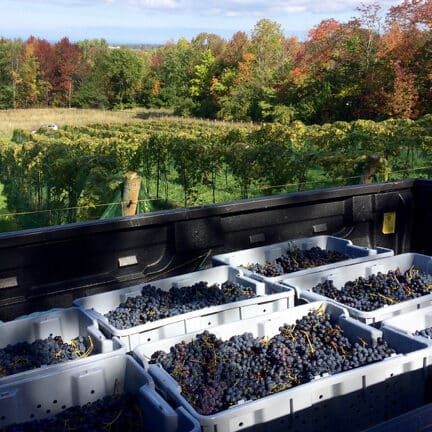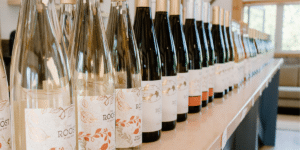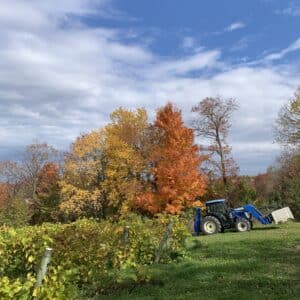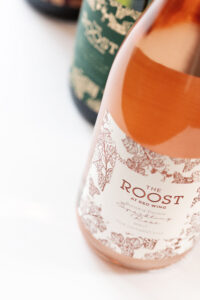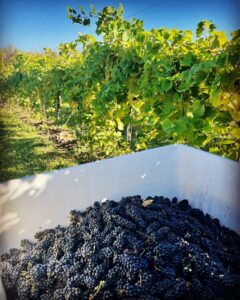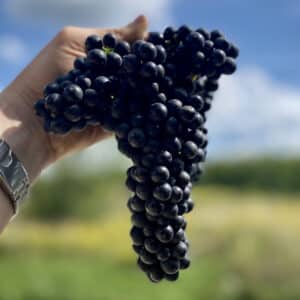So what’s all this harvest and crush business about? There are really two sides to the story: the perfect harvest that small winery owners dream of and the often truer story behind that great wine you’re drinking. Grab a glass of wine and read on…
The Ideal Harvest
September rolls around bringing bright, sunny days where the temperature hovers around 22C. You track your ripening and find that all the varieties are ripening one after the other with at least three days between harvesting each one. When it does rain, it’s only on Monday, Tuesday or Wednesday and of course, frost never happens.
Weekends are dry and warm so that your team of 25 eager, enthusiastic volunteers can join in picking your perfectly ripe, undamaged grapes. Everyone has a great time, and finishes off the day with a superb harvest dinner in the warm evening sunshine on the winery patio.
Your grapes are so gorgeous and free of lady bugs that they don’t need to be sorted and can go straight to the de-stemmer and press. You’ve ordered winemaking supplies well ahead of time and are totally organized in the lab and cellar. Everything works beautifully and nothing breaks or malfunctions.
The sweet, lovely grape juice ferments perfectly and the entire crush season is over by October 5th. You are happy and relaxed and already booking your December holiday to Mexico.
The True Story
September rolls around bringing a crazy heat wave after a frigid summer. This pushes up the sugar in your grapes but acid doesn’t have time to drop so you end up with very odd sugar and acid levels across the vineyard.
Everything is ripening late and rot has been a problem in your mostly organic vineyard due to the torrential downpours you’ve had all summer. You cross your fingers and do a little sun dance, but no one listens.
It rains every weekend and there’s frost in the forecast. If you want to pick dry grapes (and you do) you are forced to harvest all your varieties on weekdays when everyone’s working elsewhere and no one can help. Because of the unusual weather, several varieties ripen at the same time, and you spend a couple days working 18 hours a day to get them in before the thunderstorm that everyone’s talking about whips through the vineyard.
There are no harvest dinners on the patio.
Lady bugs are everywhere and you do not want them in your press because they smell and can ruin a batch of white wine before you can say “Uh oh.” This coupled with the wet summer means that all the grapes need to be hand sorted before you can de-stem and press. This takes a very long time.
You find out that when you calculated your yeast requirements after a long day working in the tasting room you forgot about the two tons of grapes you ordered in from the neighbouring farm down the road. This means you don’t have enough yeast and have to drive two hours to get some because you need it right now.
Your ferments don’t go perfectly, but you soldier through, often late into the night, and fix the problems as they arise. Then your chiller breaks. Twice. You need your chiller to control fermentation temperatures. Luckily you are diligent and catch it right a way so it’s not a big problem. But it does mean you’re in the cellar more often making sure it doesn’t happen again.
Crush drags on and the closest you can get to a holiday is a trip to Collingwood to buy a pair of insulated waterproof gloves and some heated socks.
But then the first ferments finish.
And you can taste the fruits of your labours. And then it doesn’t matter if you can’t get away until January, because you have heated socks. And you made it through another crush. And you know, deep in your winemaking heart: nothing truly great is born without great challenge.

